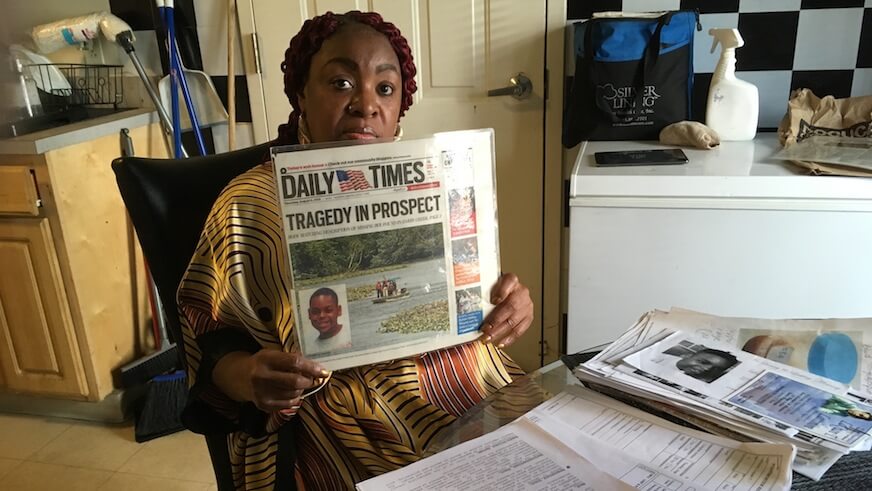Val Lattimore is a woman haunted by the death of her 11-year-old grandson in 2015. And two years later, like many who have suffered from tragedy, she still can’t accept the official story that Laquan Lattimore drowned after going swimming in Darby Creek in Delaware County.
“He was murdered and put in the river,” Lattimore told Metro Wednesday. “This was no accident. He couldn’t swim. He would never go near water. And with socks on? He’s going to jump into dirty water? No. That is unbelievable.”
It’s a claim she has made repeatedly for years, to police and to anyone who will listen.
The problem is, she doesn’t have any proof.
But she has a grandmother’s intuition, and a deeply held belief that the full story of her grandson’s death has never been told.
Laquan Lattimore was reported missing on Aug. 3, 2015. Delaware County authorities and the FBI investigated the disappearance, before discovering his body in the Darby Creek. A medical examiner determined the cause of death to be drowning.
Police declined to comment on Lattimore’s claims, which she has reported to them repeatedly.
Sources familiar with the case told Metro that surveillance video showed Laquan heading to the creek with a group of other boys, and later showed the same group leaving, minus Laquan. Police believe as Laquan became stranded in the water and drowned, his friends panicked and fled.
As a toddler, Laquan was moved by child welfare services from his mother’s care, then his father’s care, before being shifted to the home of Lattimore, 53, who lives in West Poplar. But at age 4 he was removed again to the home of a relative in Delaware County, where he lived until his death. Lattimore last saw him in July 2013, two years before he died.
Her living room in her home in the West Poplar section of Philly is dominated by a picture of him, and she has a 25-pound tote bag stuffed with documents related to the case, from police files and the medical examiner’s report to articles about other similar deaths of children that were re-investigated decades later and found to be murder.
Laquan didn’t know how to swim, she says. She doesn’t believe he would have left his bike nearby and then gone into a creek while wearing underwear and socks, which he is described as wearing in the medical examiner’s report.
No bruises or signs of a struggle were found on Laquan’s body, but “bloody, frothy sputum” was found in his upper respiratory tract. Lattimore suspects this bloody evidence is a sign that an adult in Laquan’s life may have taken his life and placed the body in the river to conceal the crime.
In fact, such sputum “is not uncommon in drowning,” said Dr. Gregory McDonald, chair of forensic medicine at the Philadelphia College of Osteopathic Medicine.
“During drowning, the small blood vessels may rupture and give a blood tinged frothy mixture in the lungs,” he said. “That’s more common than not.”
Bodies found in water pose particular difficulties for investigators, said Kimberlee Moran, a forensics professor at Rutgers, and cases do exist akin Lattimore’s theory of the murder.
“When police encounter a body in the water … they just get a big net and fish the body out, so any potentially important information is just gone,” Moran said. “There are no physiological signs that are 100 percent consistent across drownings … There are circumstances where a child is killed and it’s very convenient to just place the body in water.”
For grieving relatives like Lattimore, these challenges make the tragic loss of her son even tougher to deal with. And she said she is considering pursuing legal avenues to re-investigate the case.
“I can’t believe my boy is gone,” she said. “I live this nightmare every day. My gut instinct is telling me he was murdered.”





























